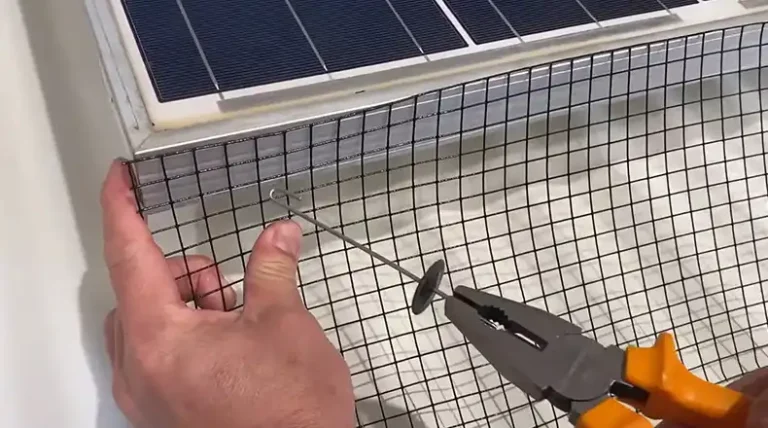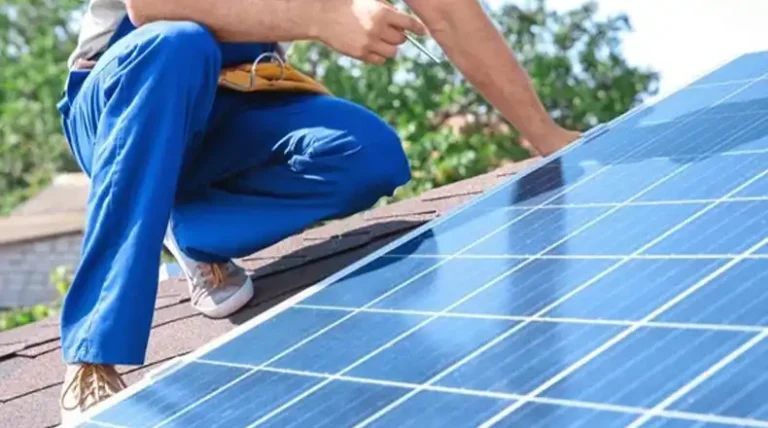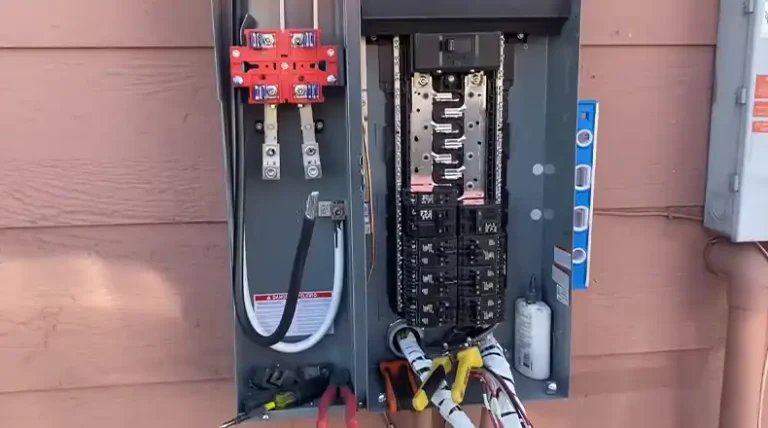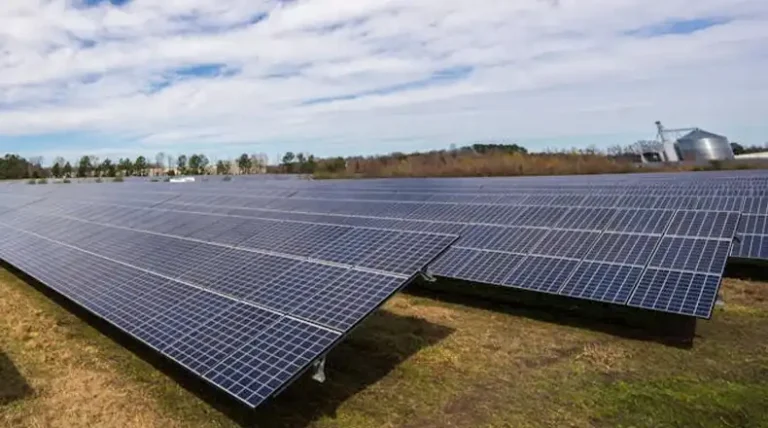Solar Panels Vs. Tesla Solar Roof Explained
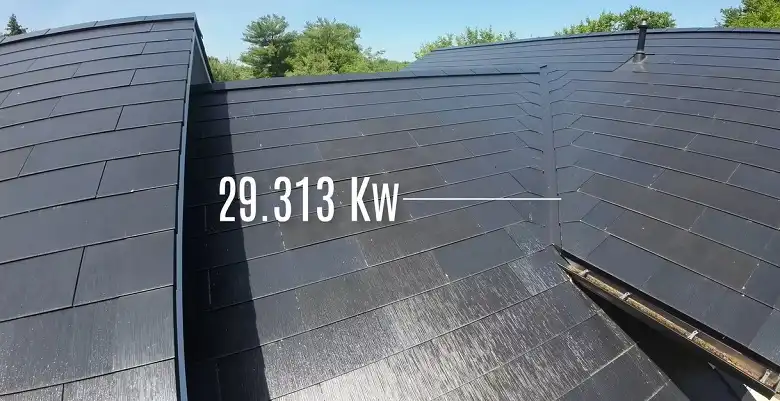
As homeowners increasingly turn to renewable energy solutions, the debate between traditional solar panels and the innovative Tesla Solar Roof has gained momentum.
Both options offer a path to clean energy and reduced electricity bills, but they come with distinct differences in cost, efficiency, and aesthetics.
While solar panels remain the more affordable and widely available choice, the Tesla Solar Roof presents an attractive alternative for those seeking a seamless integration of solar technology with their home’s architecture.
However, the decision between the two is not always straightforward and depends on various factors including roof condition, energy needs, and budget constraints.
In this comprehensive comparison, we’ll explore the key aspects of both solar solutions to help you determine which option best suits your home and energy goals.
Overview of Solar Options
When considering solar energy for your home, two main options stand out: traditional solar panels and the Tesla Solar Roof. Let’s take a closer look at each to understand their key features and differences.
Traditional Solar Panels
Traditional solar panels are the most common and well-established solar energy solution for residential use. These systems typically consist of:
- Photovoltaic (PV) panels mounted on your existing roof
- An inverter to convert DC power to AC power
- Wiring to connect the system to your home’s electrical grid
Solar panels are versatile and can be installed on various roof types, including asphalt shingles, metal, and tile. They’re also scalable, allowing homeowners to add more panels as needed to meet their energy requirements.
Tesla Solar Roof
The Tesla Solar Roof, introduced in 2016, is a more recent innovation in solar technology. It combines the functionality of solar panels with the aesthetics of traditional roofing materials. Key features include:
- Solar tiles that replace your existing roof
- A mix of active (energy-producing) and inactive tiles
- Integrated design that blends seamlessly with your home’s architecture
- Tesla Solar Inverter and optional Powerwall battery for energy storage
The Solar Roof is designed to be a complete roofing solution, making it an attractive option for homeowners who need to replace their roof and want to go solar simultaneously.
Cost Comparison Of Tesla Solar Roof Vs Regular Solar Panels
One of the most significant factors in choosing between traditional solar panels and the Tesla Solar Roof is the cost. Let’s break down the financial aspects of both options.
Upfront Costs
Traditional Solar Panels:
- Average cost: $2.86 per watt
- Total cost for a 10 kW system: Around $28,600 before incentives
Tesla Solar Roof:
- Average cost: $6.40 per watt
- Total cost for a 10 kW system: Approximately $64,000 before incentives
It’s clear that the Tesla Solar Roof comes at a premium, often costing 75% more than a traditional solar panel system.
However, it’s important to note that this price includes a full roof replacement, which may be necessary for some homeowners anyway.
Long-Term Savings
Both options can lead to significant long-term savings on electricity bills. The exact amount saved depends on factors such as:
- Local electricity rates
- Solar energy production
- Net metering policies in your area
While traditional solar panels may offer a quicker return on investment due to lower upfront costs, the Tesla Solar Roof’s durability and integrated design could potentially lead to lower maintenance costs over time.
Factors Affecting Pricing
Several factors can influence the final cost of your solar installation:
- Roof size and complexity: Larger or more complex roofs require more materials and labor, increasing costs.
- Location: Installation costs and available incentives vary by region.
- Energy needs: Larger systems to meet higher energy demands will cost more.
- Roof condition: If you need a new roof, the Tesla Solar Roof might be more cost-effective compared to installing a new roof plus traditional solar panels.
- Additional components: Battery storage systems like the Tesla Powerwall will add to the overall cost.
Efficiency and Performance
When investing in a solar energy system, efficiency and performance are crucial factors to consider. Let’s compare traditional solar panels and the Tesla Solar Roof in these aspects.
Energy Production
Traditional Solar Panels:
- Efficiency: 19-23%
- Production: 170-350 watts per panel
Tesla Solar Roof:
- Efficiency: Estimated 17-20%
- Production: Approximately 71.67 watts per tile
Traditional solar panels generally offer higher efficiency and energy production per square foot. This means you can generate more electricity with a smaller roof area using conventional panels.
However, the Tesla Solar Roof’s ability to cover more of your roof’s surface area can potentially make up for its lower efficiency in some cases.
Durability and Lifespan
Both options are designed to be durable and long-lasting, but there are some differences:
Traditional Solar Panels:
- Lifespan: 25-30 years
- Warranty: Typically 25 years for performance, 10-12 years for equipment
Tesla Solar Roof:
- Lifespan: Advertised as indefinite
- Warranty: 25 years for weatherization, power, and installation
The Tesla Solar Roof’s integrated design may offer better protection against the elements, potentially leading to a longer lifespan. However, traditional solar panels have a proven track record of durability and performance over decades.
Aesthetics and Design
The visual impact of your solar installation is an important consideration for many homeowners. Let’s compare the aesthetic aspects of both options.
Visual Appeal
Traditional Solar Panels:
- Visible panels mounted on top of existing roof
- Can be noticeable from street level
- Available in different colors, but typically blue or black
Tesla Solar Roof:
- Sleek, integrated design
- Indistinguishable from a standard roof from street level
- Available in various styles to match different architectural designs
The Tesla Solar Roof clearly has an edge in terms of aesthetics, offering a more seamless look that many homeowners find appealing. Traditional solar panels, while improved in recent years, are still visibly distinct from the roof itself.
Integration with Existing Architecture
Traditional Solar Panels:
- Can be installed on most existing roofs without major modifications
- Flexible placement allows for optimal sun exposure
- May require additional structural support in some cases
Tesla Solar Roof:
- Requires full roof replacement
- Seamlessly integrates with your home’s architecture
- May be particularly appealing for new construction or complete renovations
The Tesla Solar Roof offers superior integration with your home’s overall design, but it comes at the cost of replacing your entire roof.
Traditional solar panels offer more flexibility in terms of installation and can be easily added to most existing roofs without major changes to your home’s structure.
Installation Process
The installation process for solar energy systems can vary significantly between traditional solar panels and the Tesla Solar Roof. Understanding these differences can help you prepare for the project and set realistic expectations.
Time and Complexity
Traditional Solar Panels:
- Installation typically takes 1-3 days
- Can be installed on existing roofs without major modifications
- Well-established process with many experienced installers available
Tesla Solar Roof:
- Installation usually takes 5-7 business days
- Requires complete roof replacement
- More complex installation process
The longer installation time for the Tesla Solar Roof is due to the need for a full roof replacement and the intricate process of installing the solar tiles.
Traditional solar panels, on the other hand, can be installed relatively quickly on most existing roofs.
Availability and Scheduling
Traditional Solar Panels:
- Widely available across the country
- Many local and national installers to choose from
- Generally shorter wait times for installation
Tesla Solar Roof:
- Limited availability in some areas
- Fewer certified installers
- Potential for longer wait times and scheduling delays
It’s important to note that Tesla has faced some challenges with Solar Roof availability and scheduling. Some customers have reported long delays or even cancellations of their projects.
Traditional solar panel installations are generally more readily available and have a more established network of installers.
Pros and Cons
To help you weigh your options, let’s summarize the key advantages and disadvantages of each system.
Traditional Solar Panels
Pros:
- Lower upfront costs
- Higher efficiency and energy production per square foot
- Widely available with many installer options
- Flexible installation on existing roofs
- Proven track record of performance and durability
Cons:
- Visible on the roof, which some homeowners find less attractive
- May require separate roof maintenance or replacement
Tesla Solar Roof
Pros:
- Sleek, integrated design that blends with your home’s architecture
- Combines new roof and solar in one product
- Potential for longer lifespan due to durable materials
- May increase home value due to aesthetic appeal
Cons:
- Higher upfront costs
- Lower efficiency compared to traditional panels
- Limited availability and potential for installation delays
- Requires full roof replacement, which may not be necessary for all homes
Which Option is Right for You?
Choosing between traditional solar panels and the Tesla Solar Roof depends on your specific circumstances and priorities. Here are some scenarios to consider:
Considerations For Homeowners
- Roof condition: If your roof needs replacement soon, the Tesla Solar Roof might be more cost-effective in the long run.
- Budget: If upfront costs are a primary concern, traditional solar panels are likely the better choice.
- Aesthetics: If you prioritize a seamless, integrated look, the Tesla Solar Roof may be worth the premium.
- Energy needs: For higher energy requirements, traditional panels’ superior efficiency might be necessary.
- Home value: Consider how each option might impact your home’s resale value.
Scenarios and Recommendations
Scenario 1: You’re interested in solar but don’t need a roof replacement Recommendation: Traditional solar panels are likely the most cost-effective option.
Scenario 2: You need a new roof and want to go solar Recommendation: The Tesla Solar Roof could be a good fit, especially if you have a small or simple roof design.
Scenario 3: You want solar-plus-storage Recommendation: Both options work well with battery storage. The Tesla Solar Roof paired with Powerwall might be cost-competitive if you need multiple batteries.
Scenario 4: You prioritize aesthetics and cost isn’t a major factor Recommendation: The Tesla Solar Roof offers a sleek, integrated look that many homeowners find appealing.
Conclusion
Both traditional solar panels and the Tesla Solar Roof offer viable paths to clean, renewable energy for your home. Traditional panels remain the more affordable and widely available option, with proven efficiency and a track record of long-term performance.
The Tesla Solar Roof, while more expensive, provides an innovative solution that combines solar technology with a full roof replacement, offering superior aesthetics and potential long-term durability.
Your choice ultimately depends on your specific needs, budget, and priorities. Consider factors such as your roof’s condition, energy requirements, local availability, and aesthetic preferences when making your decision.

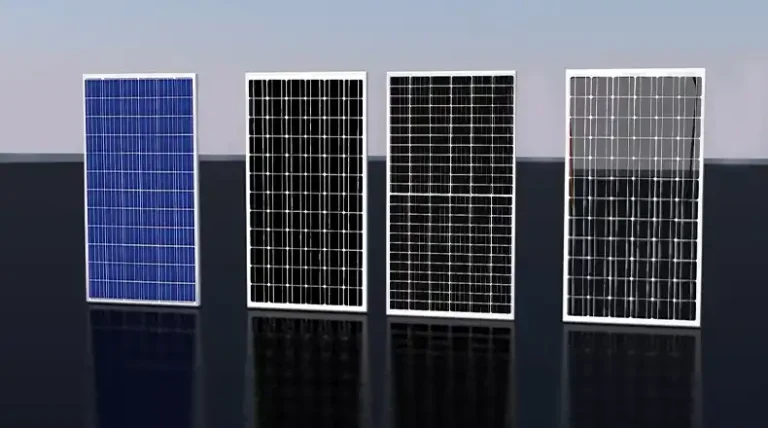
![How Many Solar Panels for 3kVA Inverter? [Answered]](https://www.itekenergy.com/wp-content/uploads/2024/06/How-Many-Solar-Panels-for-3kVA-Inverter-768x428.webp)
